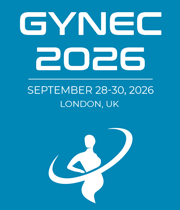Title : Risk factors for surgical site infection following caesarean delivery at a tertiary hospital in northeastern Nigeria
Abstract:
Background: Caesarean delivery is a common surgical intervention, but it carries a risk of surgical site infection (SSI), which can negatively affect maternal health, prolong hospital stay, and increase healthcare costs. Data from Northeastern Nigeria on SSI incidence and risk factors are limited.
Objective: To determine the incidence and independent risk factors for SSI following caesarean delivery at the Federal Teaching Hospital Gombe, Nigeria.
Methods: This retrospective study reviewed records of 156 women who underwent caesarean delivery between 1 January and 31 December 2018. Demographic, clinical, and intraoperative data were analysed using SPSS version 20. SSI was defined using CDC criteria within 30 days post-surgery. Fisher’s Exact Test and multivariate logistic regression were applied, with statistical significance set at p<0.05. Ethical approval was obtained (NHREC/25/10/2013).
Results: The SSI incidence was 6.4%. Isolated pathogens included Proteus mirabilis, Klebsiella oxytoca, and Staphylococcus aureus, all susceptible to commonly used prophylactic antibiotics. On bivariate analysis, preoperative packed cell volume (PCV) <30% (OR 7.2, 95% CI: 2.043–27.570) and prolonged rupture of membranes or other associated clinical risk conditions (OR 7.0, 95% CI: 1.902– 25.763) were significant. Multivariate analysis confirmed low preoperative PCV (OR 10.168, 95% CI: 1.152–89.774, p=0.037) and associated problems (OR 11.717, 95% CI: 1.237–110.959, p=0.032) as independent predictors.
Conclusion: Preoperative anaemia and certain obstetric or medical complications significantly increase the risk of post-caesarean SSI. Optimising haematocrit before surgery and providing timely pre-incision antibiotic prophylaxis are essential preventive strategies in this setting.




